

Parmigiani Bugatti Aérolithe: posterity and sportsmanship
Collaborations between the automotive industry and horology are frequent. An alliance with engineering folk is even a necessary rite of passage for several watchmaking brands.
Alas, the collaboration between these two industries often amounts on the one side to an inscription traced onto a dial, and on the other to a non-Swiss-made, often quartz clock stuck onto a dashboard. However, right since its start, the automotive adventure has always been backed by mechanical instruments to measure time. Horology found a promising source for innovative work in the then emerging automotive industry, as exemplified by the 8-day gauges in 1930’s sports cars and wristwatches with an oblique display designed to facilitate reading while driving.
The chronograph is indisputably the most perfect symbol of the fusion of these two mechanical fields. The intensifying media coverage of racing cars in the 1960s brought about an apotheosis for the wrist-borne chronograph.
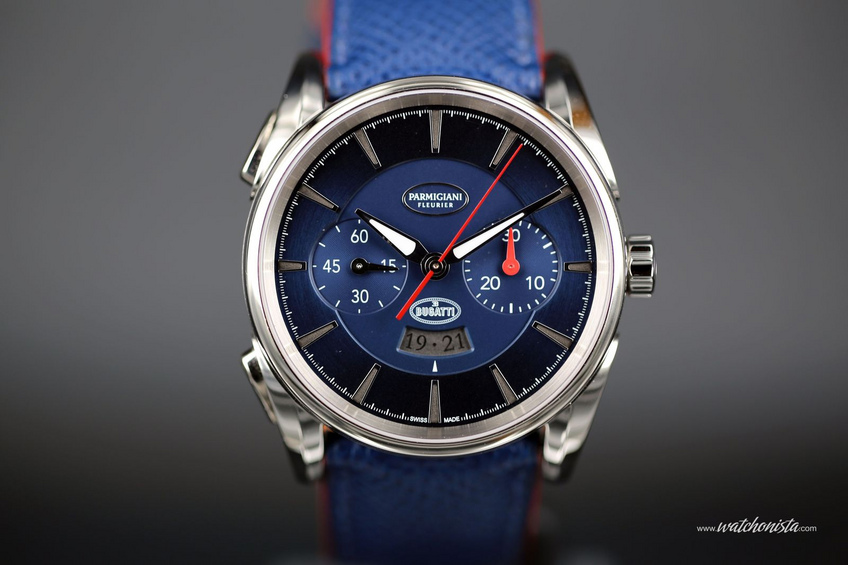
Racing drivers became true heroes in the public eye, their popularity boosted by films such as Grand Prix and Le Mans. In the whirlwind of such success, the chronograph became a must for men of action.
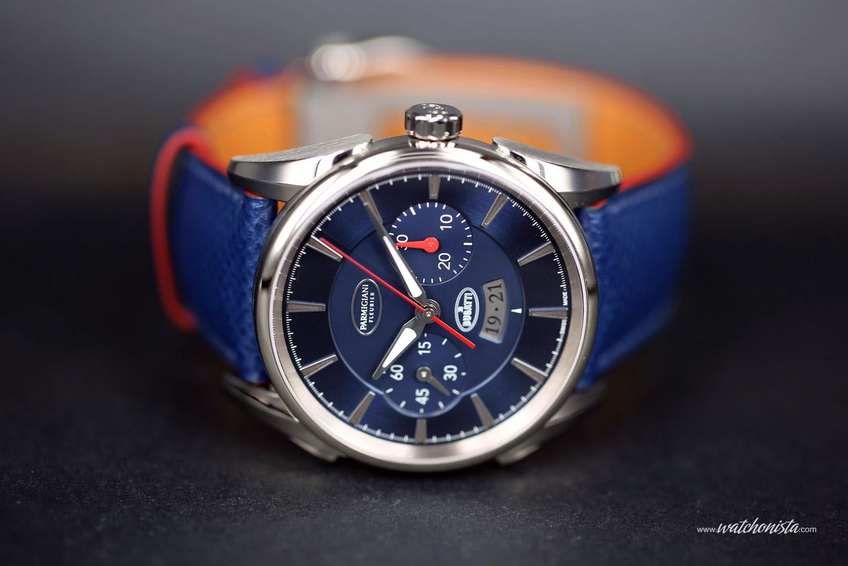
Parmigiani Fleurier and Bugatti: a partnership for excellence
Parmigiani became Bugatti’s official partner in 2001. In 2004, the brand introduced the Bugatti 370, an icon that emerged from the collaboration between the Fleurier-based watchmaker and the automaker from the from the Alsatian town of Molsheim. Their approach was radical, as seen in their design of a ”super car”, which was geared towards top performance and efficiency. Michel Parmigiani designed a movement visible through openworked surfaces on the watch’s case. His inspiration was the amazing view into the Bugatti Veyron’s engine through the rear window: “I marveled at the sheer size of the engine, it was insane. This car was an engine with wheels. I understood that I had to design a watch that would be noticed for its engine rather than its ability to measure time.”

At LAB (Les Artisans Boîtiers), they still remember the challenge they faced developing such a voluminous case with six crystal surfaces.
The mechanics of the Parmigiani Bugatti 370 is by and large inspired by the automotive conceptions. It boasts the first ever transverse movement on a horizontal plane, rather than a vertical one. Never before had anyone produced a horizontal calibre. The spacers linking the five plates are a reminder of the tubular construction of sports cars.
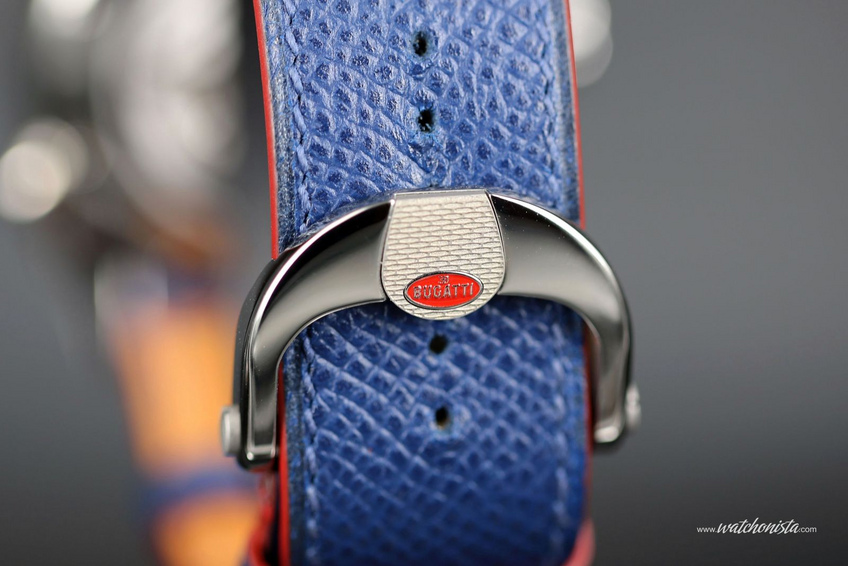
The Bugatti Atalante, the first flyback chronograph, was introduced in Geneva (at the SIHH) in 2009. It was more affordable than both the 2004 Bugatti 370 and the Bugatti 372. However, it was in no way less original with its massive case and dial inspired by the aesthetics of the grilles of 1930’s Bugattis. The chronograph’s pushers were placed on the left-hand side of the case, which makes them more accessible for the thumb. This facilitates activation of the watch’s functions without the driver taking his or her hands off the wheel.
The Bugatti 372 Super Sport was introduced at the SIHH in 2010. Unlike the calibre 970, the components of the Type 372’s movement were set on a vertical plane, thus maintaining the lateral readout by implanting it at a 90-degree angle. A system of double pinions with a conical gear allow the hours and minutes to be read on the side of the watch.

This cascading movement also displays the power reserve, the plate and the bridges through the central glass. Furthermore, thanks to its dynamometric crown, the winding stem can be moved out of the way to permit time-setting.
Parmigiani Fleurier Bugatti Aérolithe: the saga continues
The Parmigiani Bugatti Atalante was deliberately conceived with flamboyant aesthetics at the risk of irritating the senses of amateurs of classical horology. However, the Aérolithe, while housing the same self-winding flyback calibre introduced in the Atalante model, displays fluid and refined lines.
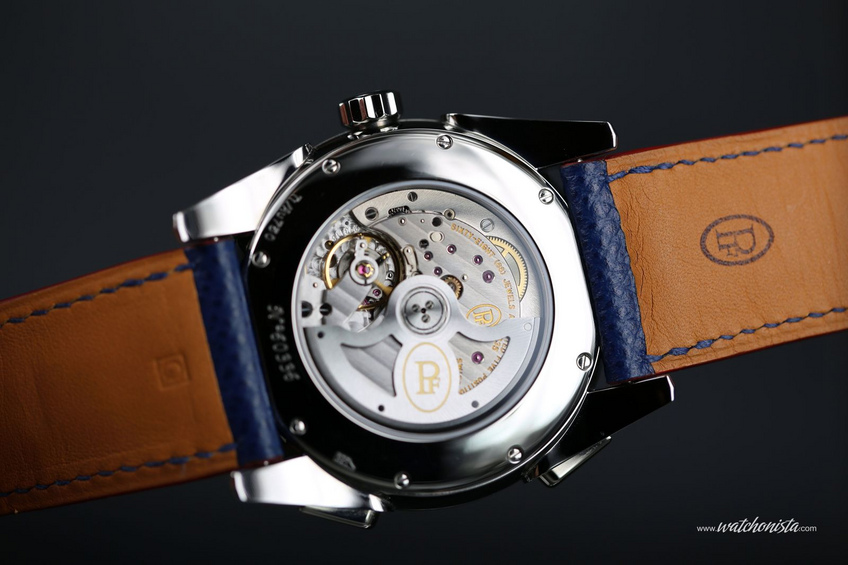
When you hold it in your hand, the relationship with the bodywork created by Jean Bugatti becomes immediately obvious. The watch was conceived around a central axis as was the Bugatti Type 57 Aérolithe, the prototype of the legendary Type 57S Atlantic. The body of the Aérolithe is made of elektron – an alloy of magnesium – and was riveted together rather than welded because the material is highly flammable. Such a technical constraint gave rise to the famous spine, the true signature of the Type 57S Atlantique, which played a major role in making the car a legend.
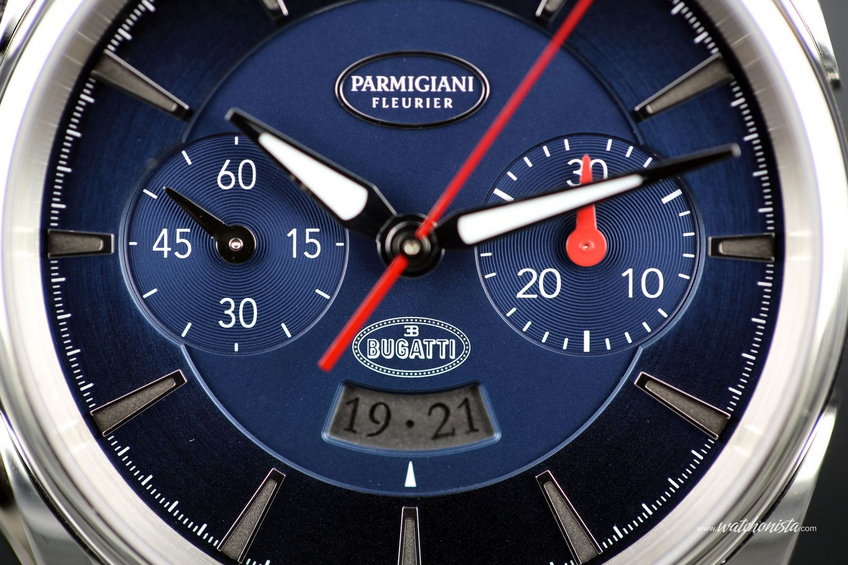
The design of the elements found in the middle part of the watch reinforces its general symmetry, with its two counters at 3 and 9 o’clock and its concave aperture at 6 o’clock. The lugs – four prominent edges – clearly evoke the body of the Bugatti type 57 Atlantic and its prototype, the Aérolithe. The profile of the lugs resembles a drop of water, which is a true identity sign of Parmigiani Fleurier’s creations, and they are deployed like the fender of Bugatti of pre-1930 models.
There is a general feeling of fluidity, like in a wind tunnel test. This is highlighted by the discreet but functional integration of the chronograph’s push-pieces on the left of the case, which give the impression of being embedded in the lugs. To top it off, the deployment buckle is engraved with a faithful image of the Bugatti Veyron’s car grill, with the famous red logo of the Molsheim brand.
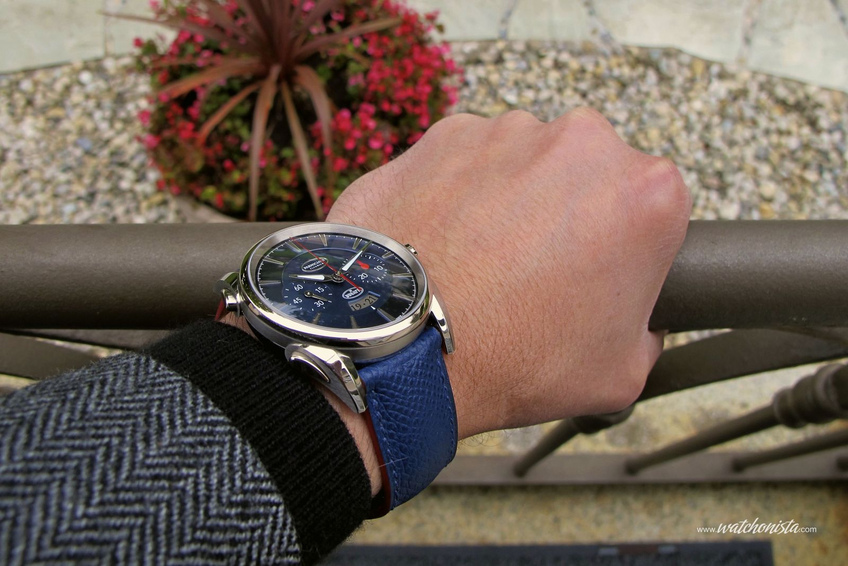
The calibre is available in two finishes, Abyss blue, a specialty of Quadrance et Habillage, a sister company of Parmigiani Fleurier, and pale green, the alleged colour of the Bugatti type 57 Aérolithe, which disappeared. The second option, more discreet, gives the watch timeless charm as a whole. The sobriety of the dial is enhanced by the two vivid red second and minute hands of the chronograph, which are easily spotted thanks to this colour combination.
It is only when worn on the wrist that the watch’s subtle refinements are fully highlighted. It is very comfortable to wear and extremely ergonomic. Such an alliance of functionality and aesthetics gave rise to a unique, perhaps even iconoclastic, timepiece.
Parmigiani Fleurier has once again met our expectations with impeccable finishing. All the components were manufactured in the companies of the MHF Group (Manufactures Horlogères de la Fondation), except for the strap, which is by Hermès, the sapphire crystals and the hands. If it hadn’t been for the company’s verticalisation, this model would most probably have never been completed owing to the extreme conceptual and implementation difficulties. The case was a particularly stark challenge. Its development needed all the know-how and perseverance of LAB’s staff.
The frequent collaborations between watch manufacturers and automakers have been the source of many surprises. However, the partnership between Parmigiani Fleurier and Bugatti is a perfect example of genuine coherence. Indeed, both these manufacturers strive to develop and produce original and contemporary creations while respecting traditions each in their own field.

It is highly probable that the Parmigiani Bugatti Aérolithe will earn kudos from watch aficionados. The watch is a veritable exploit, as it skillfully distils the distinctive traits of a vehicle while remaining, in essence, a Parmigiani Fleurier timepiece.







